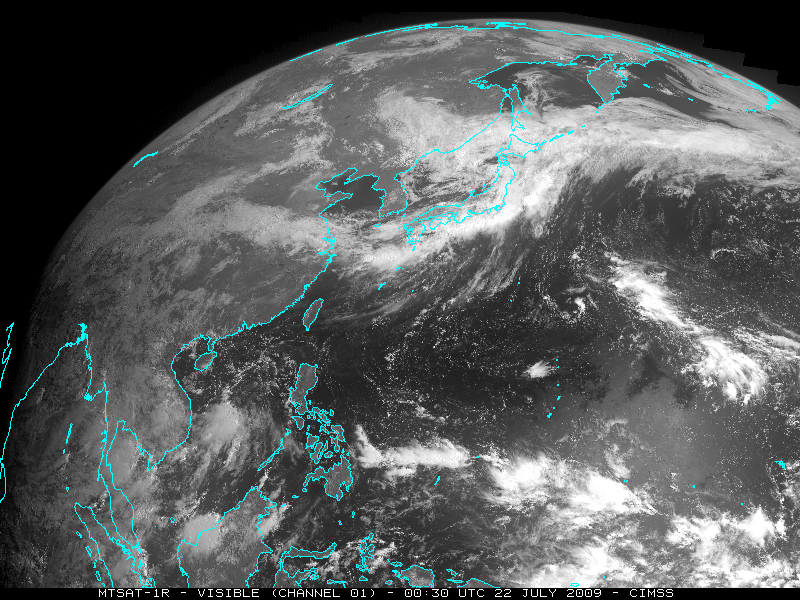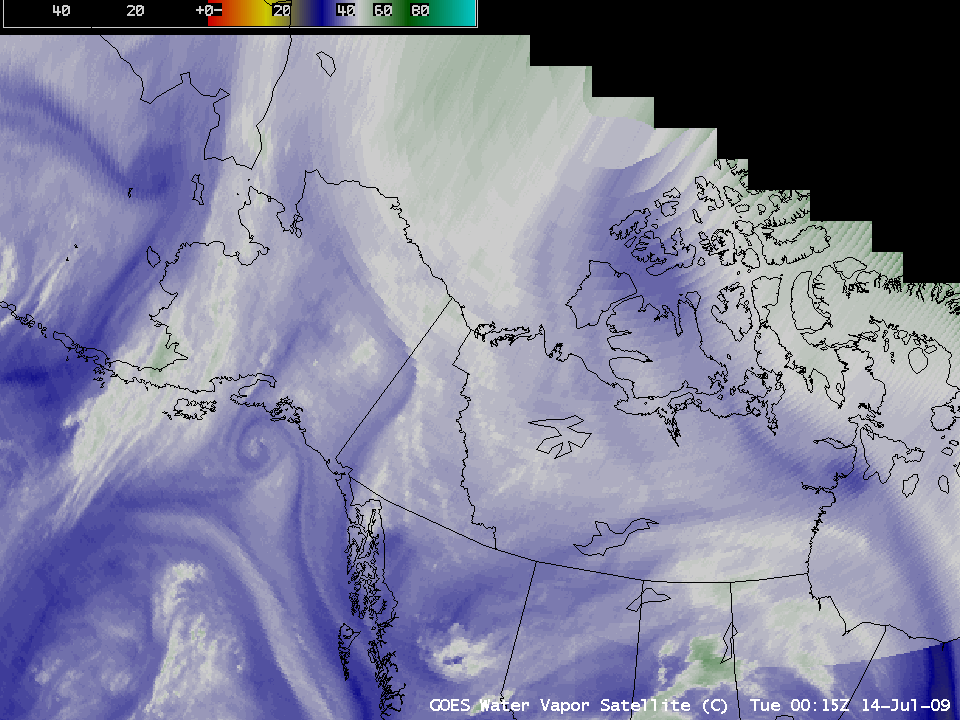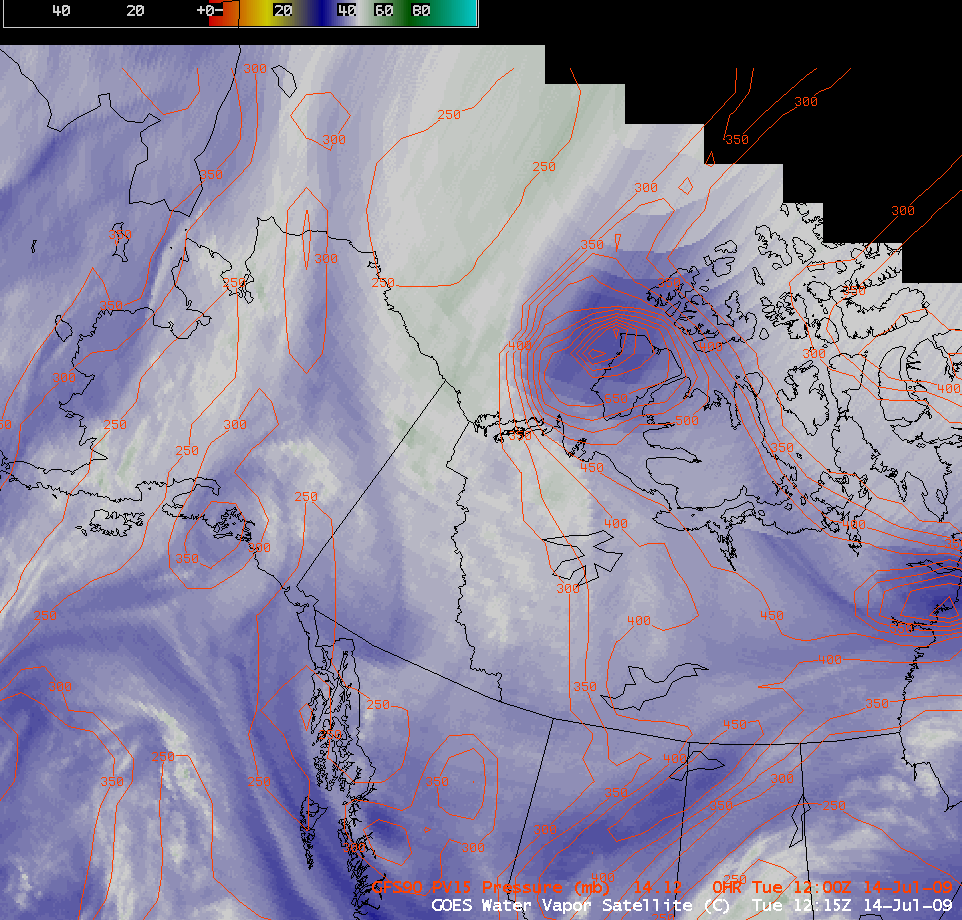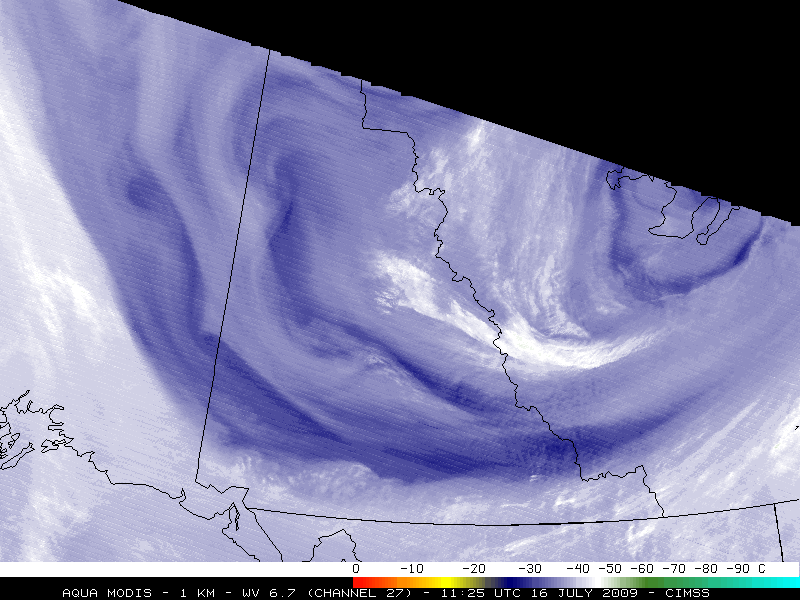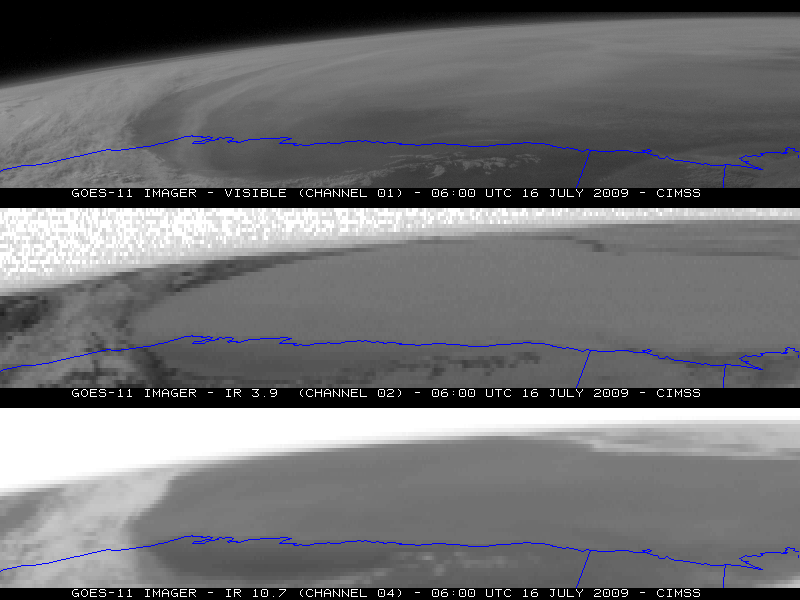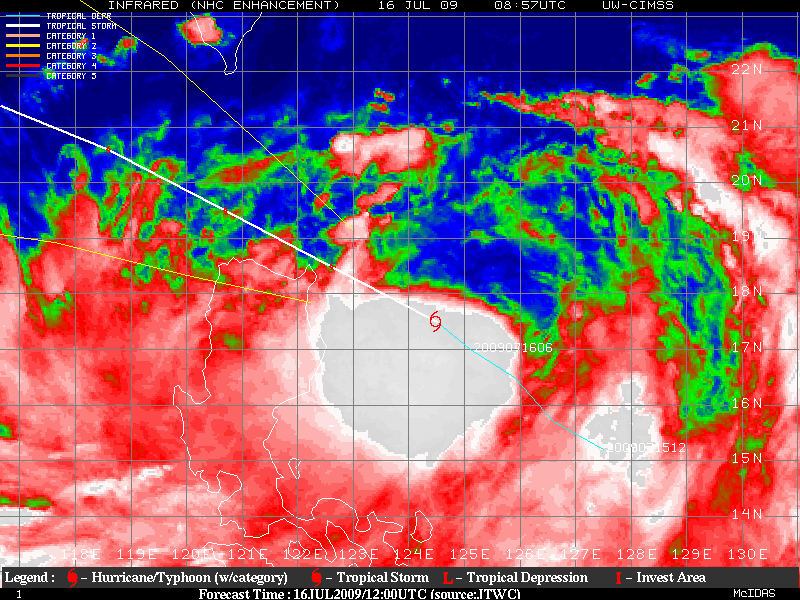The National Weather Service forecast office at Cheyenne WY requested that both the GOES-11 (GOES-West) and the GOES-12 (GOES-East) satellites be placed into Rapid Scan Operations (RSO) to monitor severe convection across their County Warning Area (CWA) on 20 July 2009: SENIOR DUTY METEOROLOGIST NWS ADMINISTRATIVE MESSAGE NWS NCEP CENTRAL OPERATIONS CAMP SPRINGS... Read More
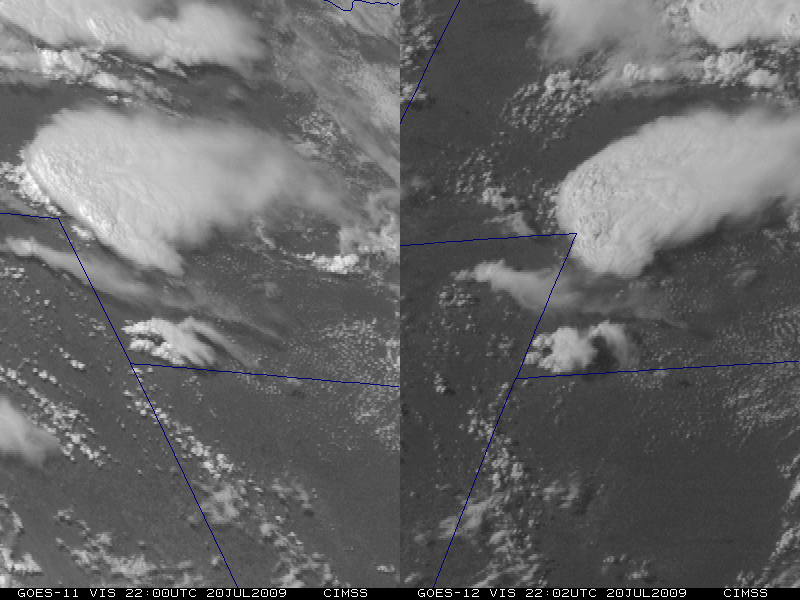
GOES-11 and GOES-12 visible images
The National Weather Service forecast office at Cheyenne WY requested that both the GOES-11 (GOES-West) and the GOES-12 (GOES-East) satellites be placed into Rapid Scan Operations (RSO) to monitor severe convection across their County Warning Area (CWA) on 20 July 2009:
SENIOR DUTY METEOROLOGIST NWS ADMINISTRATIVE MESSAGE
NWS NCEP CENTRAL OPERATIONS CAMP SPRINGS MD
2114Z MON JUL 20 2009
GOES RSO INFO…
A GOES EAST RSO WILL BE IN EFFECT FROM 2226Z TILL 0426Z
AND GOES WEST RSO WILL BE IN EFFECT FROM 2203Z TILL
0403Z THIS EVENING AS REQUESTED BY WFO CYS /CHEYENNE/
WHO IS ON THE CUSP OF THE SATELLITE RSO COVERAGE AREAS
FOR SVR WX MONITORING SUPPORT.
While there were reports of hail up to 1.0 inch in diameter in the Cheyenne CWA, the thunderstorms that developed further to the east over western Nebraska and western Kansas were more severe (producing tornadoes in Kansas, and hail as large as 4.25 inches in diameter in both Kansas and Nebraska). A comparison of GOES-11 and GOES-12 visible images (above) shows the view of these storms from each satellite perspective. Note that some features were easier to see from the GOES-11 perspective, which allowed more of a view from the side (to reveal surface boundaries and flanking line development more clearly).
A comparison of GOES-11 and GOES-12 10.7 µm IR images (below) shows that the development of a distinct “enhanced-v” signature was apparent on imagery from both satellites from the 23:00 to 23:11 UTC period. The coldest IR brightness temperatures were -67º C (darker black color enhancement) from both GOES-11 and GOES-12.

GOES-11 amd GOES-12 10.7 µm IR images
These thunderstorms appeared to be propagating southward ahead of an advancing cold frontal boundary, and along a decaying stationary frontal boundary that was oriented northwest-to-southeast from western Nebraska into central Kansas. GOES sounder Derived Product Images (DPI) of Lifted Index (LI) and Total Precipitable Water (TPW) (below) indicated that there was an axis of instability (LI values of -4 to -6 º C) and moisture (TPW values of 20-30 mm, or 0.8 to 1.2 inches) along the stationary frontal boundary.
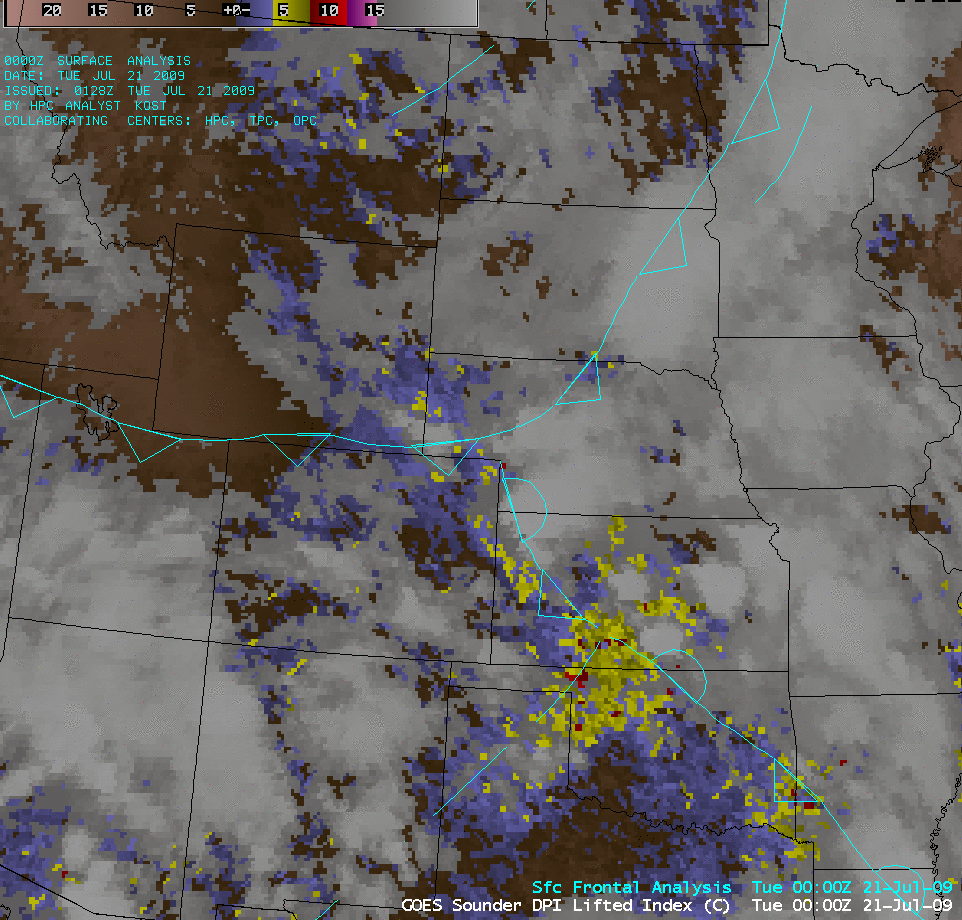
GOES sounder Lifted Index and Total Precipitable Water products
A few hours later, thunderstorms that developed ahead of the advancing cold front in Oklahoma and southern Kansas exhibited cloud top IR brightness temperatures as cold as -84º C (purple color enhancement) on AWIPS imagery of the MODIS 11.0 µm channel (below).
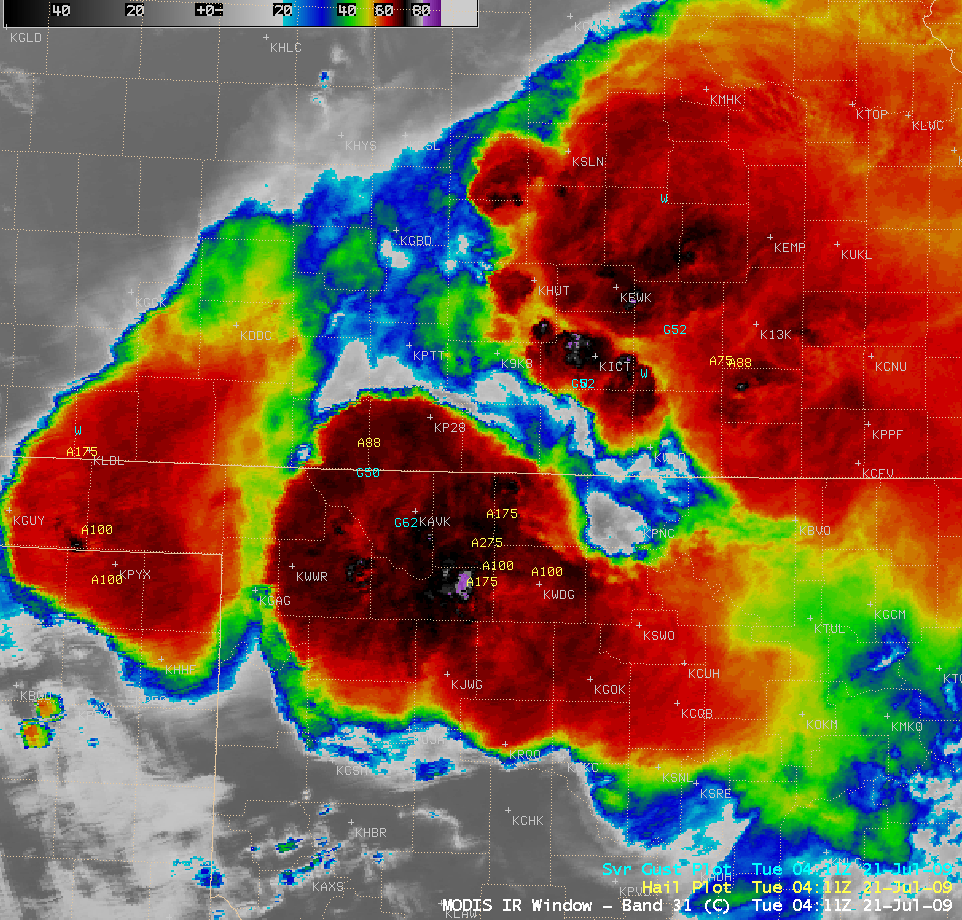
MODIS 11.0 µm IR image + SPC storm reports
===== 21 JULY UPDATE =====
On the following day, MODIS 3.7 µm shortwave IR and MODIS Land Surface Temperature (LST) images (below) revealed a long swath of rain-cooled ground across far western Kansas. MODIS LST values were in the 75-85º F range (green colors) within the swath of rain-cooled ground, in contrast to LST values in excess of 110º F (darker orange colors) just to the west.
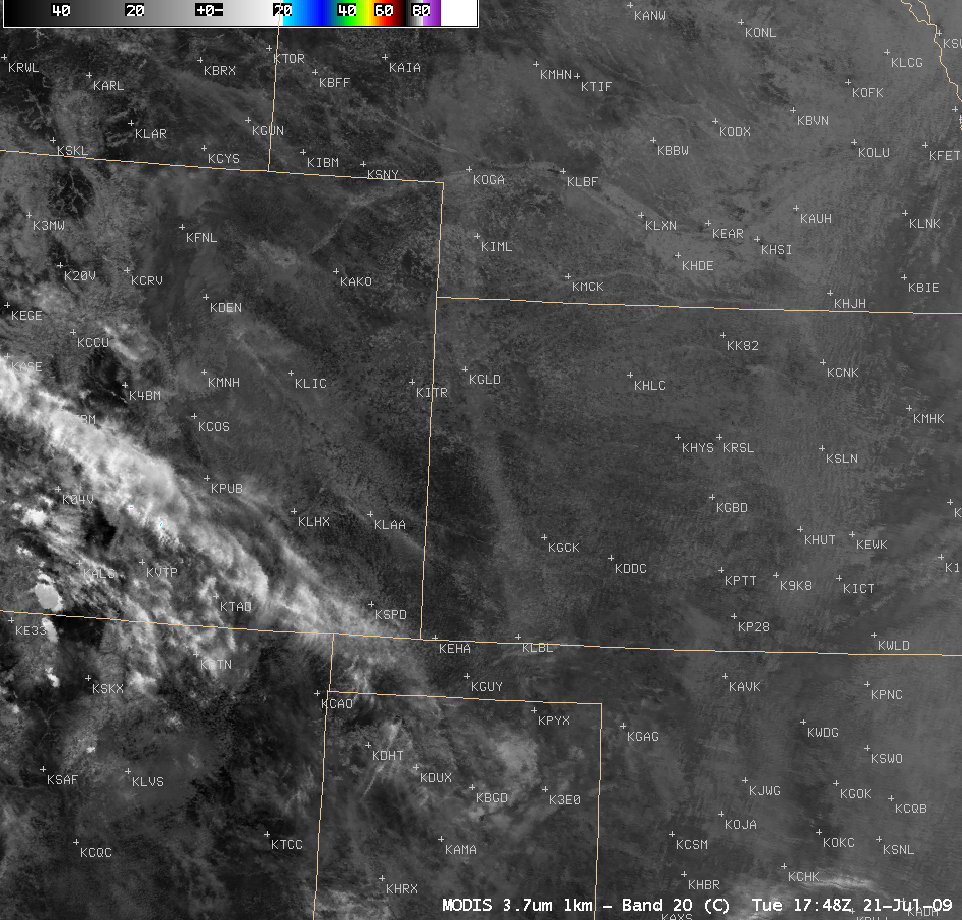
MODIS 3.7 µm shortwave IR + MODIS Land Surface Temperature product
View only this post
Read Less


